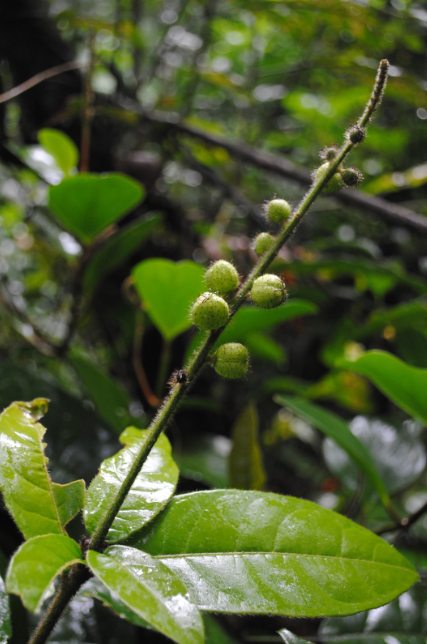Tree Conservation, Central East Mexico

-
Status of project
Ongoing -
Region
Latin America and the Caribbean -
Country
Mexico -
Programme
BGCI's Tree Conservation Programme -
Workstream
Saving Plants -
Topic
Tree Conservation
Conservation of two highly threatened tree species in central east Mexico
Project: Ongoing
Project Partner: Jardín Botánico de la Benemérita Universidad Autónoma de Puebla
Croton rosarianus (EN) and Bernardia macrocarpa (CR) are two Mexican endemic tree species restricted to the Puebla State. They grow within small areas of highly degraded cloud forest due to agriculture and urbanisation.
Mexico has more than 3,600 native tree species and the Puebla state is considered one of the most diverse states for endemic trees in the country. The project focuses on two little known endemic tree species in the Puebla state with very limited distribution and a small number of individuals.
Croton rosarianus described in 2002 from only one location, La Finca el Rosario, a private site in the cloud forest of the Sierra Madre Oriental of Puebla where it grows at about 823 m. There is not information about its reproductive biology and there are no signs of regeneration in the area where it grows. The site is used as a coffee plantation posing a threat for the survival of the species due to continued land clearance.
Bernardia macrocarpa (Critically endangered in the IUCN Red List) can reach up to 15 m tall and is only known from a small area in the cloud forest at Northeast Puebla. The tree was described for the first time in 2005 and as with Croton, the species is little known by science and the local communities.
Project Goals
To secure the integrated conservation of the species by understanding their ecology and biology, developing propagation protocols, reinforcing their populations and empowering local communities to carry out this work.
Key Achievements
GTC is collaborating with the Jardín Botánico de la Benemérita Universidad Autónoma de Puebla in Mexico to secure the integrated conservation of Croton rosarianus and Bernardia macrocarpa and working very closely with the local communities to make them participants of safeguarding the future of their endemic tree species. The project activities are:
- Surveying species population, studying reproductive biology of the species and collecting seeds and cutting material for propagation
- Developing propagation protocols and a species recovery plan in Spanish with information on the target species from ecology to conservation action directed to conservation practitioners, local communities and local government
- Delivering training in propagation techniques for local communities and establishing local nurseries close to the species distribution
- In situ planting for population reinforcement
- Carrying out a series on engagement events with local governments, landowners and local schools to invite to participate in the project.
In our first year of project, we surveyed the area for both of the species. Croton rosarianus has only been found in the locality mentioned in literature, Finca el Rosario. The number of mature individuals found is 120 with very little regeneration and none viable seeds found so far. Cutting material was taken and 35 plants have been successfully propagated for the first time in ex situ collection. Bernardia macrocarpa, has been propagated by seed and 60 plants are growing in the nursery at the botanic garden. Awareness campaigns including landowners, land workers and local communities are carried out to support the implementation of this project and to secure the survival of the species.
